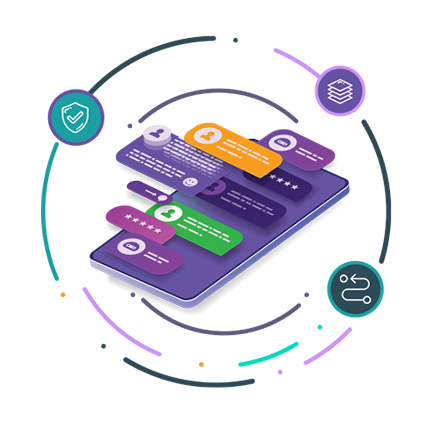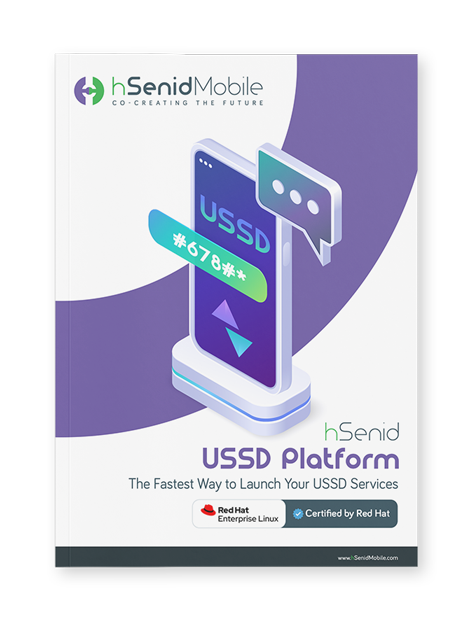USSD, or Unstructured Supplementary Service Data, may not be flashy, but it’s still one of the most reliable, cost-effective, and wide-reaching technologies in mobile communication. It’s fast, works without the internet, and is supported by virtually every mobile device in the world. That’s why USSD Gateway Platforms continue to play a critical role in powering everything from mobile banking to customer feedback services.
For developers and telecom operators looking to launch or scale USSD-based services, the gateway is where the magic happens. It’s the system that connects USSD requests between users and backend applications, managing sessions, routing messages, and ensuring seamless interactions. Choosing the right USSD Gateway Platform can make the difference between a reliable, scalable service and a frustrating experience for both developers and end-users.
To help you navigate this space, here are five standout USSD Gateway Platforms that offer robust features, flexibility, and developer support.
Highlights:
According to hSenid R&D, this platform handles up to 15,000 transactions per second and manages over 45 million messages daily in production environments. It also supports AI-enhanced menus, multilingual capabilities, and dynamic service creation, making it one of the most versatile USSD Gateway Platforms on the market.
This platform is particularly appealing to developers who want to test USSD services in sandbox mode or build rapid prototypes before scaling.
Highlights:
Though it may not match the telco-level robustness of operator-focused systems, it’s a great entry point for web developers and small businesses entering the USSD space. For many mobile startups in Africa, this combo has been the first step toward service deployment.
Highlights:
Huawei’s gateway offers reliable USSD session management and charging integration, which is critical for services like prepaid balance checks, content subscriptions, or operator billing. This platform is ideal for telecom operators with complex needs and existing Huawei infrastructure.
Highlights:
It’s particularly useful for operators looking to boost service coverage in rural and low-connectivity zones. With its lightweight interface and good performance under low-bandwidth conditions, Mobitel’s gateway is practical and proven in high-density environments.
Highlights:
This option is best suited for developers building services for MTN’s massive subscriber base across Africa. It’s not a full-featured gateway in itself but gives access to a powerful backend through secure APIs and localized support.
Here are a few factors to evaluate:
For telecom operators, features like IMS compatibility, integration with billing systems, and session redundancy are non-negotiable. For developers, fast onboarding, sandbox testing, and clear documentation make all the difference.
Whether you’re an operator launching services for millions, or a developer building the next fintech solution, choosing the right platform can make or break your project. From hSenid’s robust enterprise suite to Twilio’s developer-friendly approach through Africa’s Talking, there’s a solution that fits every scale and need.
To explore a feature-rich USSD Gateway Platform tailored for telecom-grade performance, visit our website and see how hSenid Mobile can help bring your services to life.
For developers and telecom operators looking to launch or scale USSD-based services, the gateway is where the magic happens. It’s the system that connects USSD requests between users and backend applications, managing sessions, routing messages, and ensuring seamless interactions. Choosing the right USSD Gateway Platform can make the difference between a reliable, scalable service and a frustrating experience for both developers and end-users.
To help you navigate this space, here are five standout USSD Gateway Platforms that offer robust features, flexibility, and developer support.
1. hSenid Mobile USSD Gateway
hSenid Mobile is a veteran in the telecom space, offering a feature-rich and future-ready USSD platform used by leading operators across Asia, Africa, and the Middle East. Known for its developer-friendly environment and telco-grade reliability, this platform is ideal for operators looking for performance at scale.Highlights:
- Supports 2G, 3G, 4G, and 5G in a single core
- Built-in session management with resume capabilities
- Drag-and-drop menu builder for non-developers
- IMS-ready and integrates with SIP for 5G use cases
- Real-time analytics and extensive API support
According to hSenid R&D, this platform handles up to 15,000 transactions per second and manages over 45 million messages daily in production environments. It also supports AI-enhanced menus, multilingual capabilities, and dynamic service creation, making it one of the most versatile USSD Gateway Platforms on the market.
2. Twilio USSD Integration (via Africa’s Talking)
While Twilio itself doesn’t offer a direct USSD product, developers can integrate with USSD through its partnership with Africa’s Talking, one of the fastest-growing communication platforms in Africa.This platform is particularly appealing to developers who want to test USSD services in sandbox mode or build rapid prototypes before scaling.
Highlights:
- Lightweight and developer-first
- Provides USSD APIs through a simple REST interface
- Offers sandbox testing for rapid development
- Useful for startups and fintech services
Though it may not match the telco-level robustness of operator-focused systems, it’s a great entry point for web developers and small businesses entering the USSD space. For many mobile startups in Africa, this combo has been the first step toward service deployment.
3. Huawei USSD Gateway
Huawei’s USSD Gateway solution is tailored for large-scale mobile operators who want deep network integration, performance, and multi-service support. It is part of Huawei’s broader suite of core network components and integrates tightly with the rest of the telecom infrastructure.Highlights:
- Carrier-grade stability with enterprise-level support
- Designed for multi-service delivery and scalability
- Rich menu customization through Huawei’s ecosystem
- Works well with existing Huawei IMS and charging systems
Huawei’s gateway offers reliable USSD session management and charging integration, which is critical for services like prepaid balance checks, content subscriptions, or operator billing. This platform is ideal for telecom operators with complex needs and existing Huawei infrastructure.
4. Mobitel USSD Framework
Mobitel (now part of SLT-Mobitel in Sri Lanka) has developed its own USSD Gateway solution tailored for regional telco operators. While it’s not as globally known, it’s highly optimized for national deployments and has strong integration capabilities for content providers.Highlights:
- Offers easy onboarding for content providers
- Strong focus on localization and language support
- Quick deployment for custom USSD services
- Allows third-party applications to connect via secure APIs
It’s particularly useful for operators looking to boost service coverage in rural and low-connectivity zones. With its lightweight interface and good performance under low-bandwidth conditions, Mobitel’s gateway is practical and proven in high-density environments.
5. MTN Developer USSD Portal
MTN, one of Africa’s largest telecom groups, provides developers access to USSD capabilities through its Developer Portal. While this offering may vary slightly by country, it has enabled hundreds of mobile services across sectors like fintech, health, agriculture, and education.Highlights:
- Direct access to MTN’s USSD APIs
- Secure shortcode registration
- Designed for local and regional developer ecosystems
- Sandbox available for basic testing
This option is best suited for developers building services for MTN’s massive subscriber base across Africa. It’s not a full-featured gateway in itself but gives access to a powerful backend through secure APIs and localized support.
What Developers and Operators Should Consider
Choosing between different USSD Gateway Platforms depends on your priorities, whether you’re looking for easy deployment, deep customization, or telco-grade scalability.Here are a few factors to evaluate:
- Scalability: Can the platform grow as your user base expands?
- API Support: Does it support modern RESTful APIs or require telco-specific protocols?
- Session Management: How well does it handle session resumes, timeouts, and routing?
- Cost Structure: Are you paying per session, per shortcode, or a flat fee?
- Security and Compliance: Does it provide authentication, secure APIs, and data privacy options?
- Localization: Can you build multilingual menus, offer custom navigation, and adapt to local market needs?
For telecom operators, features like IMS compatibility, integration with billing systems, and session redundancy are non-negotiable. For developers, fast onboarding, sandbox testing, and clear documentation make all the difference.
Conclusion: Which USSD Gateway Platform Is Right for You?
USSD may not have the flash of modern apps, but it delivers something far more important—reach, reliability, and simplicity. That’s why USSD Gateway Platforms are still powering essential services across the world, especially in regions where mobile data is expensive or coverage is inconsistent.Whether you’re an operator launching services for millions, or a developer building the next fintech solution, choosing the right platform can make or break your project. From hSenid’s robust enterprise suite to Twilio’s developer-friendly approach through Africa’s Talking, there’s a solution that fits every scale and need.
To explore a feature-rich USSD Gateway Platform tailored for telecom-grade performance, visit our website and see how hSenid Mobile can help bring your services to life.








